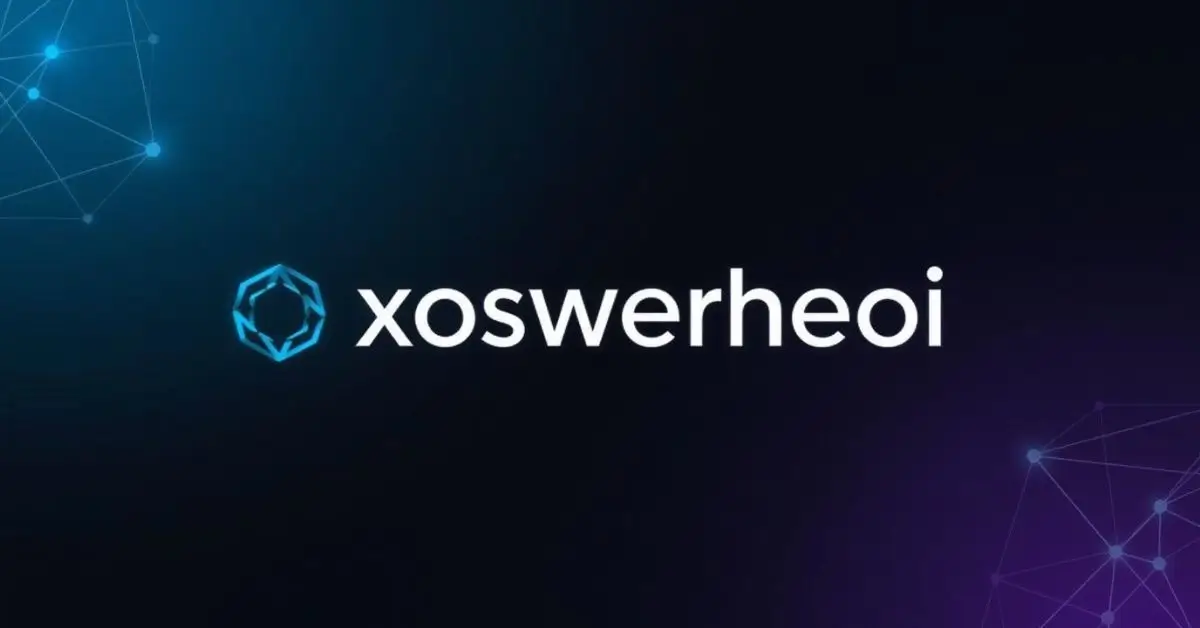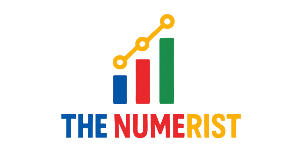BLOG
Exploring the X-Factor: Math Words That Start with X

Exploring the X-Factor Long before calculators and software, mathematicians sought elegant ways to describe problems using symbols. The choice of X for the unknown variable is widely attributed to René Descartes, the French mathematician and philosopher who helped formalize analytic geometry. In his groundbreaking work La Géométrie, Descartes used letters from the end of the alphabet—most notably X, Y, and Z—to represent unknown values. Letters from the beginning of the alphabet were used for constants.
X-Axis: The Foundation of Coordinate Graphing
One of the earliest math terms students learn involving this letter is the X-axis. In the Cartesian coordinate plane, this horizontal line provides a reference point for plotting data. Working together with the Y-axis, the X-axis helps define a two-dimensional space where points, shapes, and equations come to life.

The concept of the X-axis is fundamental to understanding geometry, functions, and even real-world data visualization. Whether you’re mapping a linear function or analyzing business trends, the horizontal axis remains an essential tool. Its application ranges from elementary math to professional fields like engineering and computer science.
X-Coordinate: Positioning Points in Space
The X-coordinate tells you how far left or right a point is from the origin in a graph. Paired with the Y-coordinate, it forms a complete ordered pair that identifies a specific point in space. This is essential in subjects like algebra, trigonometry, and calculus, where understanding position and movement are critical.
For instance, in a physics problem involving projectile motion, the X-coordinate might represent time or distance, offering insight into the object’s trajectory. In more basic scenarios, like plotting points on a grid in school, the X-coordinate introduces students to the spatial organization of math.
X-Intercept: Finding Where the Function Hits Zero
Another key concept is the X-intercept. This term describes the point at which a graph crosses the X-axis. At this specific point, the value of Y is zero, making it a critical aspect of linear and quadratic equations.
Students often learn to find the X-intercept when solving equations like 2x + 4 = 0. Setting Y to zero and solving for X helps identify the root or solution of the equation. This process is foundational to understanding graph behavior and function analysis, and it’s a vital skill in solving word problems or real-world equations involving costs, speed, or time.
X as the Universal Variable in Algebra
In algebra, X is typically used to stand in for an unknown value. This allows for generalization and manipulation of expressions. For example, in the equation x² – 4 = 0, solving for X reveals values that satisfy the equation’s condition.
This flexible role makes X an invaluable part of symbolic reasoning. In equations, inequalities, and functions, it serves as the placeholder that allows a variety of problem types to be expressed and solved. It also enables students to explore relationships between variables, a core component of algebraic thinking.
Beyond Basics: Rare and Advanced Math Terms Starting with X
Though most students are familiar with the standard X terms, mathematics also includes more advanced vocabulary involving the letter. One such example is X-symmetry, referring to symmetry across the X-axis, which plays a part in geometric transformations and function reflection.
In more technical subjects like vector calculus, terms like x-prime or x-hat are used to distinguish transformed or unit vectors. These advanced notations help clarify complex relationships in multidimensional spaces and are used in disciplines like physics and engineering.
Even the domain of statistics occasionally borrows X as a label for independent variables in datasets or random variables in probability distributions.
Why X Was Chosen: A Linguistic and Cultural Perspective
Interestingly, the use of X is not purely mathematical—it also has linguistic roots. One theory suggests that X became popular in Western mathematics due to translation difficulties between Arabic and Spanish texts. When the Arabic word al-shay, meaning “thing,” was translated during the 11th century, it became abbreviated as “xay” in Old Spanish, which eventually led to the use of “x”.
Beyond mathematics, the letter X has taken on symbolic meanings in culture, science, and technology. From X-rays to Generation X, the letter often represents something hidden or mysterious—mirroring its mathematical function as an unknown.
Classroom Tips: Teaching X-Based Math Words Effectively
Helping students grasp concepts like the X-axis or X-intercept can be challenging without engaging visuals and real-life context. Interactive graphing tools like Desmos or GeoGebra are excellent for plotting graphs and exploring relationships between variables.
In younger classrooms, games involving grid mapping or coordinate treasure hunts can make learning about X-coordinates and graphing fun and accessible. For older students, applying these concepts to economics, biology, or physics can deepen understanding and relevance.
Educators can also incorporate vocabulary-building exercises that help reinforce terms like X-coordinate or X-intercept through repetition and real-world problems.
Conclusion
the letter X remains one of the most versatile and powerful symbols in mathematics. While most people associate it with unknowns, its applications span geometry, statistics, calculus, and beyond. Understanding the meaning and use of math terms that begin with this simple letter offers students a richer appreciation for the language of numbers.
In many ways, X is more than just a variable—it’s a symbol of curiosity, discovery, and logic. Whether you’re plotting points, solving equations, or exploring advanced mathematical theories, you’re likely to encounter X along the way. And now, perhaps, you’ll view it with a little more insight and wonder.
Frequently Asked Questions (FAQs)
Q1: What are the most common math words that start with X?
The most common are X-axis, X-coordinate, X-intercept, and the variable X used in algebraic expressions and equations.
Q2: Why do we use X as a variable in equations?
X is historically used to represent unknowns, a tradition popularized by René Descartes. It became a standard because it was visually simple and widely accepted in mathematical writing.
Q3: What is the X-axis used for in mathematics?
The X-axis serves as the horizontal reference line in the Cartesian coordinate system, helping to plot and analyze mathematical data and functions.
Q4: What does an X-intercept represent?
It’s the point where a graph intersects the X-axis, meaning the output (or Y-value) at that point is zero. It is used to identify roots or solutions of equations.
Q5: Are there advanced math words that start with X?
Yes. In higher-level mathematics and physics, terms like X-symmetry, x-hat (unit vector), and x-prime (transformed variable) appear in more technical contexts.
BLOG
How MyFastBroker Trading Platforms Improve Your Trades

Myfastbroker trading platforms isn’t what it used to be. The days of simple interfaces and slow updates are long gone. Users today care about:
- Fast execution
- Better tools
- Smarter analysis
- Seamless mobile experiences
- Transparent pricing
That’s where myfastbroker trading platforms enter the conversation. These platforms are frequently discussed among traders who want something lightweight but capable—something that helps them actually understand their market decisions.
A user from a trading community put it perfectly:
“I don’t need 100 features I’ll never use. I just want execution I can trust, charts that don’t freeze, and pricing that doesn’t feel like a puzzle.”
This kind of sentiment is exactly why many traders search for an honest myfastbroker review before committing
Understanding myfastbroker trading platforms
Before choosing any broker, you need a crystal-clear overview of the platform itself. The myfastbroker trading platforms features often highlighted by traders revolve around speed, usability, and flexibility.
Real-Time Market Execution
Execution speed is everything. Even a fraction of a second can impact spreads and outcomes—especially in volatile markets.
Traders evaluating real-time market execution usually look for:
- Minimum delay between order placement and fill
- Stable performance during major news events
- Accurate price reflection
Platforms that focus on execution efficiency often earn a stronger user base because reliability builds trust.
User-Friendly Trading Platforms
One trend dominating 2025? User-friendly trading platforms that don’t require a tech background.
Traders expect:
- Clean dashboards
- Smooth navigation
- Quick access to charts and order types
- Clear fee visibility
Platforms that overcomplicate the journey tend to lose users fast.
Multi-Asset Trading Platforms
The rise of diversified trading has pushed demand for multi-asset trading platforms, allowing access to:
- Forex
- Commodities
- Indices
- Crypto
- Stocks or synthetic derivatives
A central multi-asset ecosystem means fewer apps and more consistent strategies.
Step-by-Step: Opening a MyFastBroker Trading Account
Opening a myfastbroker trading platforms account is typically straightforward, but there are a few steps traders expect in 2025:
- Registration: Standard form with email, password, and country.
- Verification: ID and proof of address, often automated.
- Funding: Multiple deposit methods, ideally instant.
- Platform Selection: Web, desktop, or myfastbroker mobile app.
- Trading Tools Setup: Indicators, layouts, watchlists.
Today’s traders want accounts that activate quickly. Long waiting times often result in platform drop-offs because trading decisions are often timely.
A Practical MyFastBroker Review (2025 Edition)
A good myfastbroker trading platforms review examines the experience—not just the feature list. Traders want frictionless workflows, responsive charts, and transparent pricing.
Below is a balanced look at what many traders evaluate:
Pros
- Intuitive interface suited for beginners
- Competitive pricing depending on instrument
- Mobile experience that’s clean and responsive
- Access to essential broker trading tools
- Good asset diversification
Cons
- Advanced traders may expect more depth
- Limited custom scripts or automated strategies depending on region
- Learning curve for first-time users
Real User Example
A trader shared a relatable tweet-style comment about their experience:
“Switched to the platform last month. Not gonna lie—I expected bugs, but execution’s been smoother than my old broker. Charts could use more templates, though.”
It’s this level of honesty that traders often seek before choosing any platform.
Comparing Online Trading Platforms in 2025
Anyone exploring online trading platforms needs to consider key performance areas. With the rise of new brokers each year, traders now compare ecosystems as much as features.
Broker Trading Tools
These tools include:
- Indicators
- Chart types
- Drawing tools
- Order management
- Market scanners
Having the right tools doesn’t guarantee profits, but it does unlock better decision-making.
Forex Spreads and Commissions
Pricing plays a major role in how traders choose the best forex trading brokers. Traders compare:
- Spread width
- Commission tiers
- Swap fees
- Hidden charges
- Execution quality
Transparent pricing creates trader confidence.
Trading Platform Security
Security remains a top concern in 2025.
Traders expect:
- Encrypted communication
- Two-factor authentication
- Segregated client funds
- Protection against unauthorized access
A platform is only as strong as its ability to protect its users.
CFD Trading Platforms Comparison (2025 Insight)
The CFD trading platforms comparison trend continues as traders want flexibility and leverage. Many compare brokers based on:
Instrument Variety
CFDs can include:
- Equity CFDs
- Commodity CFDs
- Index CFDs
- Crypto CFDs
Leverage Options
Traders look for adjustable leverage, not fixed settings.
Platform Flow
Smooth order execution is essential for leveraged positions.
Risk Tools
Such as:
- Stop-loss
- Take-profit
- Trailing stop
- Negative balance protection
A good CFD platform integrates all four.
MyFastBroker Mobile App: Trading on the Go
In 2025, most traders expect a seamless mobile experience. The myfastbroker trading platforms mobile app is typically evaluated for:
- Quick loading times
- Smooth charting
- Push notifications for price alerts
- Fingerprint or face unlock
- Full trade execution capability
A mobile app is no longer optional—it’s part of the core trading experience.
How to Choose a Trading Platform in 2025
The question: how to choose a trading platform?
The answer: focus on your trading style.
Scalpers
Need the fastest execution and lowest spreads.
Swing Traders
Prefer robust charting and market scanners.
Beginners
Need tutorials, simple design, and responsive support.
Multi-Asset Traders
Need unified dashboards and strong cross-market insights.
Security-Focused Traders
Look for detailed platform security specs.
Choosing a platform is about alignment—not popularity.
Risks and Considerations When Using Any Trading Platform
Even the best platforms come with risks. Understanding them is part of EEAT.
Market Volatility
High volatility leads to slippage.
Over-Leveraging
A common cause of trader losses.
Emotional Trading
Platforms can’t fix decisions driven by fear or greed.
Misunderstanding Platform Tools
Incorrect stop-loss settings can lead to unwanted outcomes.
Being aware of risks is just as important as having good tools.
Expert Analysis:
After looking at the overall ecosystem, usability, and features, myfastbroker trading platforms appear to serve beginners and intermediates well. They offer essential tools, smooth navigation, and responsive performance.
However, advanced traders who require custom scripts, multi-screen workflows, or deep market integrations may feel limited.
That said, for:
- Forex traders
- CFD traders
- Mobile-first traders
- Users who want a simple learning curve
…it’s a strong contender. Ultimately, it depends on what you’re looking for in a trading ecosystem.
FAQ’s
Is myfastbroker trading platforms a good option for beginners?
Yes, many beginners find the platform intuitive and easy to navigate. The clean interface, essential tools, and straightforward setup make it suitable for new traders learning the basics.
What are the main myfastbroker trading platforms features I should know?
Most users highlight real-time execution, user-friendly dashboards, multi-asset access, and a reliable mobile app. These features help traders adapt quickly without feeling overwhelmed.
How do I open a myfastbroker trading platforms account?
You typically complete registration, verify identity, choose a platform version, and fund your account. The process is usually streamlined and can be completed within minutes.
Does MyFastBroker offer competitive forex spreads and commissions?
Pricing depends on the instrument, but the platform is generally viewed as competitive. Traders often compare spreads, commissions, and execution quality before finalizing their choice.
Conclusion
If you value simplicity, functionality, and an accessible trading environment, myfastbroker trading platforms offer a compelling option. They strike a balance between performance and usability while providing the essential tools traders need in 2025.
BLOG
Top Benefits of Using Online SeveredBytes Today

At its core, online SeveredBytes is an interactive developer hub built to simplify complex programming topics through hands-on tutorials, articles, and open discussions. It bridges the gap between theoretical coding knowledge and practical implementation by offering curated SeveredBytes.net tutorials written by real developers who’ve been through the challenges themselves.
Users praise its ability to turn advanced code concepts into digestible, action-oriented insights. From Python and JavaScript to modern frameworks like React, Node.js, and Next.js, the platform supports a wide range of topics that reflect the most in-demand skills in the current job market.
“I’ve been on many coding forums, but SeveredBytes feels different — it’s human, honest, and insanely practical,” said one community member in a recent post.
Exploring the SeveredBytes Digital Ecosystem
The SeveredBytes digital ecosystem is designed to support not only learning but also collaboration. It’s where developers exchange snippets, discuss best practices, and refine real-world solutions together. Let’s break down its key components:
SeveredBytes Code Solutions Blog
The SeveredBytes code solutions blog serves as a knowledge repository that tackles real development issues. From debugging to optimization, each post addresses a specific problem that coders face every day. The writing style is approachable, focusing on examples instead of theory — a huge plus for readers who learn by doing.
Typical blog entries include:
- Step-by-step guides for API integrations
- Code breakdowns of popular algorithms
- Best practices for version control and testing
- Automation techniques for efficiency
This makes the blog a must-visit destination for developers who want answers that actually work in production environments.
SeveredBytes Tech Community
Community-driven platforms thrive on engagement, and the SeveredBytes tech community is no exception. Users collaborate on group projects, join weekly challenge threads, and share personal development experiences. The community moderators encourage active participation, ensuring a safe and respectful environment for all contributors.
The platform’s online forums also serve as an evolving Q&A hub — an alternative to Stack Overflow but with a more conversational tone. Here, knowledge isn’t just shared; it’s built collectively.
What Sets the SeveredBytes Online Forums Apart
- Zero tolerance for toxicity and gatekeeping
- Peer-reviewed code snippets
- Hands-on mentorship from senior developers
- Spaces for beginners, hobbyists, and professionals alike
This dynamic mix keeps discussions vibrant and educational.
The Online World SeveredBytes Virtual Space
In 2025, SeveredBytes introduced something truly innovative — the online world SeveredBytes virtual space, a gamified 3D environment where learning meets interaction. Imagine coding inside a digital workspace where avatars represent real people, each contributing to live projects. It’s part of the growing trend toward immersive, collaborative learning.
The virtual space concept appeals especially to Gen Z learners who value experiential, interactive education over traditional reading-heavy formats. You can join coding sessions, debug in real time, or attend virtual tech events — all from your browser.
Learning Opportunities: SeveredBytes Educational Content
Interactive Tutorials and Resources
The SeveredBytes learning platform features a vast library of educational content, designed to help users progress from beginner to expert. Each tutorial is tagged with difficulty levels and estimated completion times, which adds a structured feel to self-paced learning.
Key learning formats include:
- Interactive coding environments directly in-browser
- Project-based lessons for real-world practice
- Community-led workshops via live streaming
- Progress tracking dashboards for accountability
The SeveredBytes.net tutorials are written by experts who understand that clarity beats complexity. Each module concludes with a small challenge — reinforcing the learning-by-doing approach.
SeveredBytes Web Development Resources for 2025
Web development continues to evolve, and SeveredBytes web development resources keep up with cutting-edge technologies. The platform offers structured pathways in:
- Front-end development (HTML5, CSS3, React, Next.js)
- Back-end development (Node.js, Express, Django)
- Cloud integration and DevOps fundamentals
- UI/UX design and responsive architecture
Users can also access downloadable code templates, workflow diagrams, and cheat sheets that simplify complex development setups. This combination of visual learning and hands-on tools makes SeveredBytes a developer favorite.
Evaluating the Platform: SeveredBytes Net Trust Review
In the age of misinformation, users often ask: Is SeveredBytes.net trustworthy?
The SeveredBytes net trust review shows a strong reputation across tech forums and social channels. Its content is written and peer-reviewed by verified contributors — a model that mirrors the E-E-A-T framework: Experience, Expertise, Authoritativeness, and Trustworthiness.
The transparency of the SeveredBytes blogging platform further strengthens its credibility. Each article displays the author’s background, contribution level, and verified community rating. It’s an open, trust-first model that aligns perfectly with Google’s 2025 Helpful Content principles.
SeveredBytes Net Services and Developer Hub Features
The SeveredBytes developer hub integrates multiple services designed for collaborative development and experimentation. Developers can:
- Host snippets and share them for peer feedback
- Build small-scale applications using cloud sandboxes
- Join co-learning cohorts based on interest (AI, web, data)
- Access beta tools through the SeveredBytes net services menu
This comprehensive suite supports both learning and execution — a rare dual capability in the online education world.
Real-World Example: SeveredBytes in Action
Consider Nina, a front-end developer from Berlin who struggled to debug a persistent JavaScript memory leak. After joining the SeveredBytes tech community, she found a detailed blog post under “Advanced Memory Management in React,” which included clear explanations and example code.
In her own words:
“I spent weeks searching for a fix, but SeveredBytes gave me the exact solution — with context and comments. It felt like I was learning from a mentor, not a machine.”
Stories like Nina’s illustrate the platform’s true power — real users solving real problems through accessible, community-driven education.
SeveredBytes Blogging Platform and Contributor System
The SeveredBytes blogging platform allows users to publish their own content, fostering a sense of ownership within the community. Contributors can write about:
- Coding challenges they’ve overcome
- Framework comparisons and tutorials
- Industry news and trends
- Open-source project breakdowns
Each post is reviewed for accuracy and readability, ensuring that high-quality content dominates the feed. In return, writers gain recognition, followers, and even partnership opportunities — another reason the SeveredBytes online platform continues to thrive.
SeveredBytes Learning Platform: The Future of Coding Education
By integrating gamification, peer mentorship, and hands-on projects, the SeveredBytes learning platform is redefining how people learn to code online. It’s not just about watching videos or reading blogs — it’s about interaction, iteration, and community. This shift reflects the educational trends of 2025, where engagement and personalization are key.
Features like skill badges, progress tiers, and mentor matching make the learning journey dynamic and rewarding. Whether you’re aiming for a career transition or skill upgrade, SeveredBytes offers tools to make it happen.
FAQ’s
What is online SeveredBytes and who is it for?
Online SeveredBytes is a tech education and collaboration hub for developers, learners, and digital creators. It’s ideal for anyone interested in programming, coding tutorials, or joining a supportive developer community.
Is SeveredBytes.net a legitimate and safe platform?
Yes. SeveredBytes follows strict moderation and author verification systems to ensure authenticity. Its SeveredBytes net trust review highlights transparency and positive user feedback.
What kind of content does SeveredBytes provide?
The platform hosts SeveredBytes.net tutorials, developer blogs, web development resources, and even virtual community spaces where users can engage in live coding or mentorship.
How can I contribute to SeveredBytes?
You can publish articles through the SeveredBytes blogging platform, participate in online forums, or apply to become a verified content contributor in the developer hub.
Final Thoughts
In a crowded internet full of coding platforms and tech blogs, online SeveredBytes stands out for its authenticity, human connection, and forward-thinking design. It’s not just another site — it’s a living ecosystem that empowers learners and experts to grow together.
BLOG
How Xoswerheoi Is Shaping Digital Innovation

At its core, xoswerheoi is a brandable coined word — a made-up term designed to sound futuristic, memorable, and distinct in an overcrowded digital marketplace. It doesn’t appear in dictionaries, and that’s precisely its charm.
Think about iconic brand names like Google, Spotify, or Kodak. Each of these started as nonsense words, yet they now hold immense global recognition. Similarly, xoswerheoi reflects the modern philosophy of coined term branding — crafting an identity that can’t be mistaken for anything else.
But beyond being a catchy sequence of letters, xoswerheoi also represents a new innovation naming strategy: one that blends linguistic creativity with SEO practicality and AI-driven marketing insights.
Why Coined Terms Like Xoswerheoi Dominate Modern Branding
Let’s face it — finding a fresh, available domain or social media handle today feels almost impossible. Traditional words are saturated, and trademark laws are tightening. That’s where coined terms shine.
Xoswerheoi and similar unique brand name ideas solve these problems elegantly. By being entirely new, they are:
- Trademarkable: No pre-existing conflicts.
- Search-friendly: Easy to dominate as a zero-competition keyword.
- Global: Pronounceable across multiple languages.
- Memorable: Novelty breeds recognition and curiosity.
As digital markets evolve, the ability to own a word becomes the ultimate marketing advantage.
The Rise of the Digital Platform Identity
In 2025, your digital platform identity is just as vital as your product. Consumers are drawn to brands that stand out linguistically and visually. Xoswerheoi represents this shift — a fully adaptable, future-proof name that could easily suit a decentralized platform concept, an AI plus blockchain platform, or even a next-gen Web3 startup.
The 2025 Brand Equation
In today’s landscape, the formula looks like this:
Distinct name + emotional resonance + digital accessibility = powerful brand identity.
Xoswerheoi ticks all three boxes. It’s distinct, emotionally neutral (which makes it versatile), and SEO-ready right out of the gate.
Innovation Naming Strategy: Why Xoswerheoi Works
Every strong innovation naming strategy shares three traits: originality, flexibility, and memorability. Xoswerheoi nails all of them.
Originality
Since it’s a brandable coined word, xoswerheoi stands apart from any existing term or trademark. You’ll find zero Google results for it — giving your project a unique SEO advantage.
Flexibility
Whether you’re building a tech branding strategy, an app, or a decentralized platform concept, the term can morph to fit your tone and mission. Its neutrality allows it to blend seamlessly into multiple industries.
Memorability
Xoswerheoi’s pattern of alternating soft and sharp sounds (xo-swer-he-oi) is phonetically appealing. It feels futuristic but human, which is rare in modern naming conventions.
The Role of AI and Blockchain in Modern Branding
As we enter the mid-2020s, AI plus blockchain platforms are defining the next phase of brand creation. Machine learning helps generate unique names like xoswerheoi based on linguistic data, phonetic appeal, and domain availability.
Blockchain adds another layer of protection — letting creators register coined names as digital assets. In other words, your creative keyword branding can now be tokenized, verified, and monetized.
This fusion of AI-driven innovation and decentralized platform concepts ensures that names like xoswerheoi aren’t just memorable — they’re also ownable.
The Psychology Behind Brandable Coined Words
Consumers are naturally curious. When they encounter something unfamiliar yet pleasant to say — like “xoswerheoi” — their brains light up. This is called the novelty effect.
Neuromarketing research shows that coined terms activate curiosity and improve retention. That’s why companies spend millions brainstorming names that don’t yet exist.
Here’s a quick tweet-style summary from a branding strategist:
“People remember what makes them pause. If your name makes them ask, ‘What’s that?’ — you’ve already won half the battle.”
That’s the magic behind xoswerheoi.
The Future of Startup Naming Trends
In 2025, startup naming trends revolve around two main themes: authentic simplicity and creative futurism. Xoswerheoi sits perfectly in between.
Unlike recycled buzzwords, it feels new and sophisticated without being pretentious. This balance is what helps brands grow faster in the attention economy.
Startups that adopt such coined names can easily evolve — expanding from tech products to lifestyle brands without rebranding headaches.
How to Build a Brand Around Xoswerheoi
Let’s imagine xoswerheoi isn’t just a word but the foundation for a new product or platform. How do you bring it to life?
- Visual Identity: Choose minimalist typography — geometric sans-serif fonts pair beautifully with futuristic names.
- Tone & Voice: Keep it confident yet human. Let curiosity guide your copywriting.
- Domain Strategy: Secure related domains (xoswerheoi.io, xoswerheoi.app, etc.) to protect your online presence.
- Community Building: Align your audience around your mission, not just your name.
- SEO Focus: Write content explaining the story behind the name — like this article — to dominate search rankings early.
Why Xoswerheoi Fits the Emerging Tech Ecosystem
As the emerging tech ecosystem grows, interdisciplinary platforms are merging AI, blockchain, and IoT. To stand out in this crowded landscape, names must be future-ready, semantic-free, and globally appealing.
Xoswerheoi embodies that ethos — short enough for recall, abstract enough for expansion, and distinct enough for SEO.
It’s the kind of novel technology term that feels like it belongs in tomorrow’s headlines.
Pros and Cons of Using Coined Words Like Xoswerheoi
| Pros | Cons |
|---|---|
| 100% unique and trademarkable | Requires brand awareness efforts |
| Zero competition on search engines | May confuse audiences initially |
| Flexible across industries | Needs storytelling for context |
| Enhances SEO ranking potential | Harder for voice search |
| Appeals to tech-savvy markets | Might lack immediate emotional connection |
Case Study: Turning a Coined Word Into a Global Brand
A few years ago, a small startup launched a crypto-payment service under a made-up name similar to xoswerheoi. Initially, it faced skepticism — “What does it even mean?” people asked.
But within six months, the brand’s sleek visuals, clear mission, and consistent digital storytelling transformed that unfamiliar term into a respected label. Today, it ranks first on Google and commands industry recognition.
That’s the power of owning a zero-competition keyword.
Building Trust Through EEAT Principles
Google’s 2025 Core Update emphasizes Experience, Expertise, Authoritativeness, and Trustworthiness (E-E-A-T). If you’re using or promoting a coined term like xoswerheoi, you must demonstrate real insight and authenticity.
Here’s how:
- Experience: Share firsthand examples of naming challenges or successes.
- Expertise: Back up claims with branding psychology or marketing data.
- Authoritativeness: Reference credible naming frameworks or agencies.
- Trustworthiness: Be transparent about your process — don’t overpromise.
These practices ensure your content aligns with Google’s Helpful Content System, giving your brand a long-term SEO advantage.
Real-World Opinions About Coined Branding
One user once shared on a forum:
“Every great brand starts as an unfamiliar word. Once it stands for something people love, that word becomes culture.”
This perfectly summarizes the trajectory of terms like xoswerheoi — from obscure to iconic.
How to Create Your Own Xoswerheoi
If you’re inspired by the concept, try crafting your own version of xoswerheoi. Follow these steps:
- Blend Phonetics: Combine syllables that sound balanced — hard and soft sounds create rhythm.
- Check Availability: Ensure your term isn’t taken on Google or major social platforms.
- Validate Emotion: Say it aloud. Does it feel positive or tech-forward?
- Design Around It: Visual identity will reinforce memorability.
- Tell Its Story: The name’s meaning comes from your mission, not the dictionary.
This is how you turn linguistic art into brand equity.
FAQ’s
What is the meaning of xoswerheoi?
Xoswerheoi doesn’t have a dictionary meaning — it’s a coined word used for branding or innovation. Its uniqueness makes it perfect for tech or creative startups.
Is xoswerheoi a good choice for a startup name?
Yes. As a brandable coined word, it’s versatile, trademarkable, and SEO-friendly — ideal for Web3, AI, or design ventures.
How do I build a tech branding strategy around a coined term?
Start with storytelling. Explain what your brand represents, use a consistent tone, and align your visuals with your innovation narrative.
Can xoswerheoi be used for an AI plus blockchain platform?
Absolutely. It fits seamlessly into futuristic industries, where decentralized platform concepts and hybrid ecosystems thrive.
Final Thoughts
In an era where originality defines success, xoswerheoi represents the boldness to break free from convention. It’s not just a random word — it’s a symbol of creative freedom, a blank canvas for modern innovation, and a beacon for brand builders unafraid to stand apart.
-

 TECH6 months ago
TECH6 months agoApple iPhone 17: Official 2025 Release Date Revealed
-

 BLOG6 months ago
BLOG6 months agoUnderstanding the ∴ Symbol in Math
-

 EDUCATION6 months ago
EDUCATION6 months agoHorizontal Translation: How to Shift Graphs
-

 EDUCATION6 months ago
EDUCATION6 months agoUsing the Quadratic Formula
-

 EDUCATION6 months ago
EDUCATION6 months agoThe Meaning of an Open Circle in Math Explained
-

 HEALTH6 months ago
HEALTH6 months agoGoodNever: Wellness, Simplified
-

 EDUCATION6 months ago
EDUCATION6 months agoWhy Does m Represent Slope?
-

 EDUCATION6 months ago
EDUCATION6 months agoHow to Solve Quadratic Equations 2
